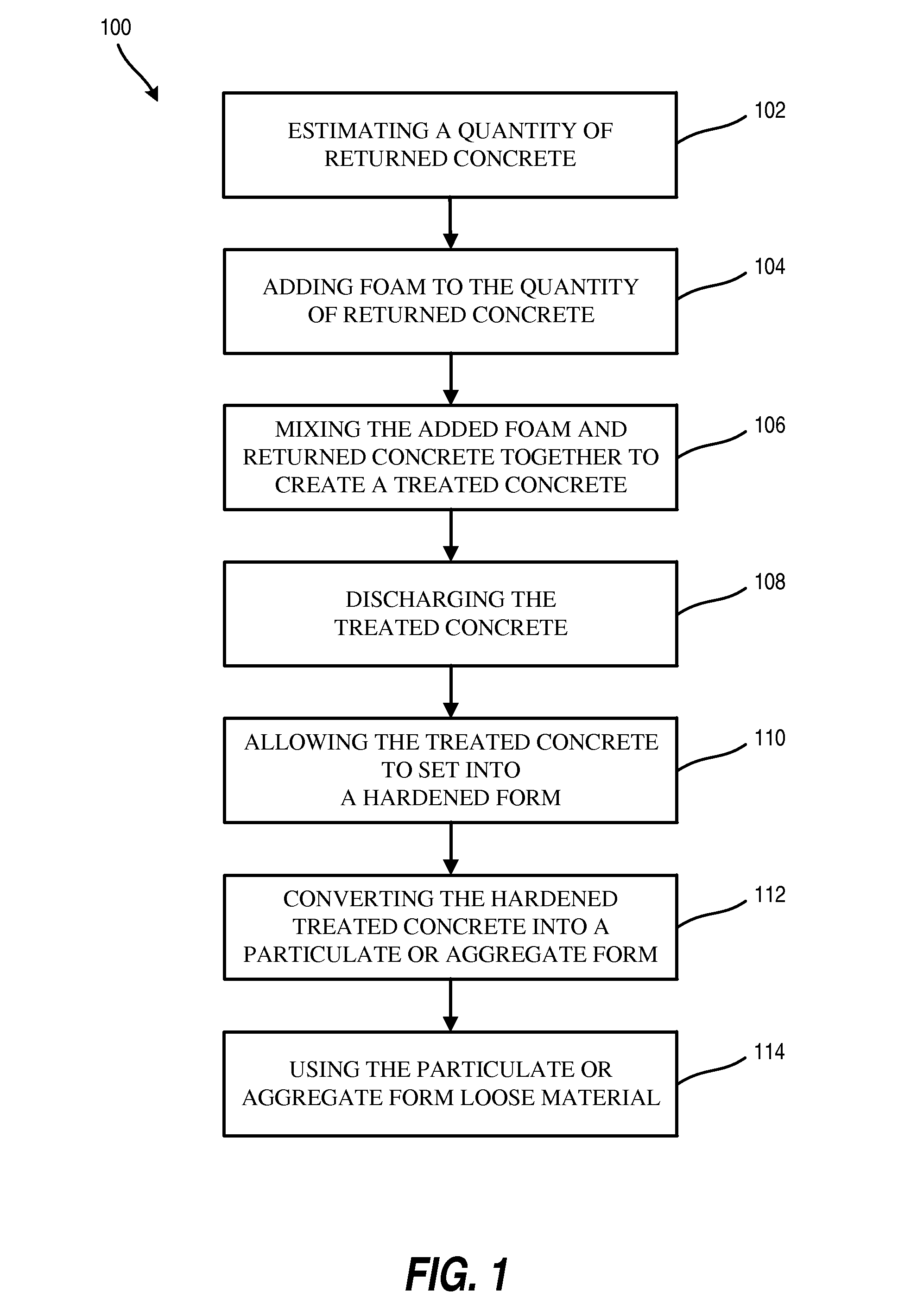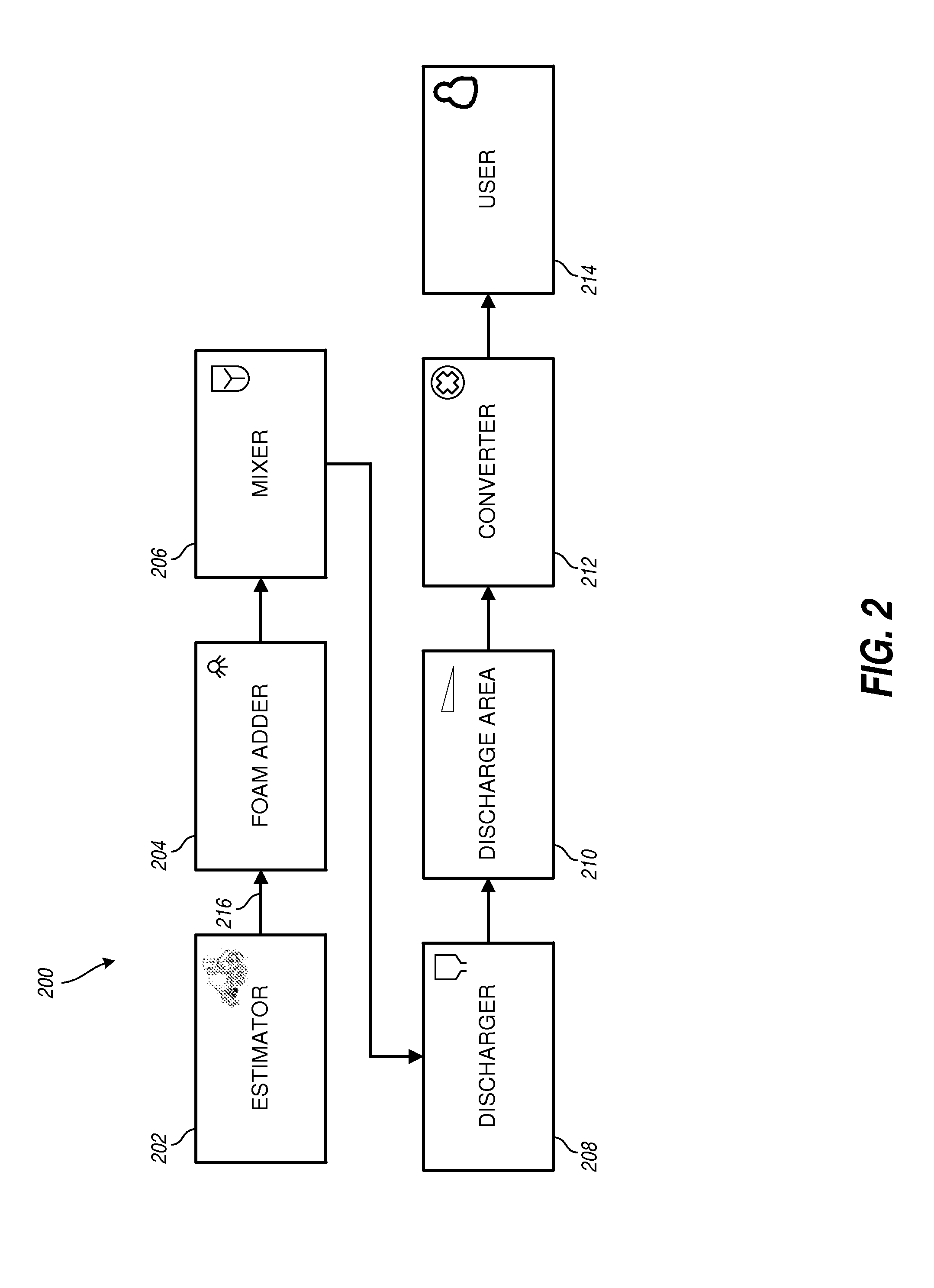Method of processing unhardened concrete
- Summary
- Abstract
- Description
- Claims
- Application Information
AI Technical Summary
Benefits of technology
Problems solved by technology
Method used
Image
Examples
example 1
[0108]In this example, foam was produced by using a foaming machine and a foaming agent (CMX foam concentrate or LD foam concentrate) supplied by Richway Industries Ltd. (Janesville, Iowa). Foam was added to various loads of returned ready-mixed concrete to determine the appropriate water-to-foaming agent ratio to treat each yard of returned concrete. Water-to-foaming agent ratios from 16 to 88 were evaluated, with the best ratio found to be approximately 40 to 50. High water-to-foaming agent ratios resulted in treated concrete that was too strong and difficult to break up. Low water-to-foaming agent ratios created a denser foam that sufficiently weakened the treated concrete to allow it to be broken up; however, this ratio used too much foaming agent.
example 2
[0109]In this example, foam was produced by using a foaming machine and a foaming agent (CMX foam concentrate or LD foam concentrate) supplied by Richway Industries Ltd. (Janesville, Iowa). Foam was added to various loads of returned ready-mixed concrete to determine the amount of foam needed to process unhardened concrete. Water-to-foaming agent ratios of 40 to 50 were used. Trials with too little foam added to the returned concrete resulted in treated concrete that was too strong and difficult to break up. With large volumes of foam added, the treated concrete was very weak and easy to break up, but excess foam was clearly visible.
[0110]In this example trials were done with 15 to 48 cubic feet of foam per cubic yard of returned concrete added and mixed in within the truck drum. This volume of foam decreased the concrete unit weight from approximately 145 pounds per cubic foot to approximately 30 to 80 pounds per cubic foot. The 3-day compressive strength of the concrete decreased ...
example 3
[0111]This is an example where the recycled loose particulate material was collected and used as coarse and fine aggregate to produce new concrete. Returned concrete was treated as discussed in Example 2. After setting, the very low-strength, foam-treated concrete was scooped up with a front-end loader and stockpiled. Four cubic feet of the loose particulate material was collected for use as all the aggregate to produce a new concrete mixture. An anti-foaming agent (Air-Minus) supplied by FritzPak was added to reduce the total air content in the new concrete. After mixing, a total air content of 2.0 percent was obtained when tested in accordance with ASTM C231. Cylinders were made and tested in accordance with ASTM C39 and a 28-day strength of 4,500 psi obtained. These results indicate that concrete with acceptable properties can be made with the recycled loose particulate material obtained from recycling treated returned concrete.
PUM
 Login to View More
Login to View More Abstract
Description
Claims
Application Information
 Login to View More
Login to View More - R&D
- Intellectual Property
- Life Sciences
- Materials
- Tech Scout
- Unparalleled Data Quality
- Higher Quality Content
- 60% Fewer Hallucinations
Browse by: Latest US Patents, China's latest patents, Technical Efficacy Thesaurus, Application Domain, Technology Topic, Popular Technical Reports.
© 2025 PatSnap. All rights reserved.Legal|Privacy policy|Modern Slavery Act Transparency Statement|Sitemap|About US| Contact US: help@patsnap.com



